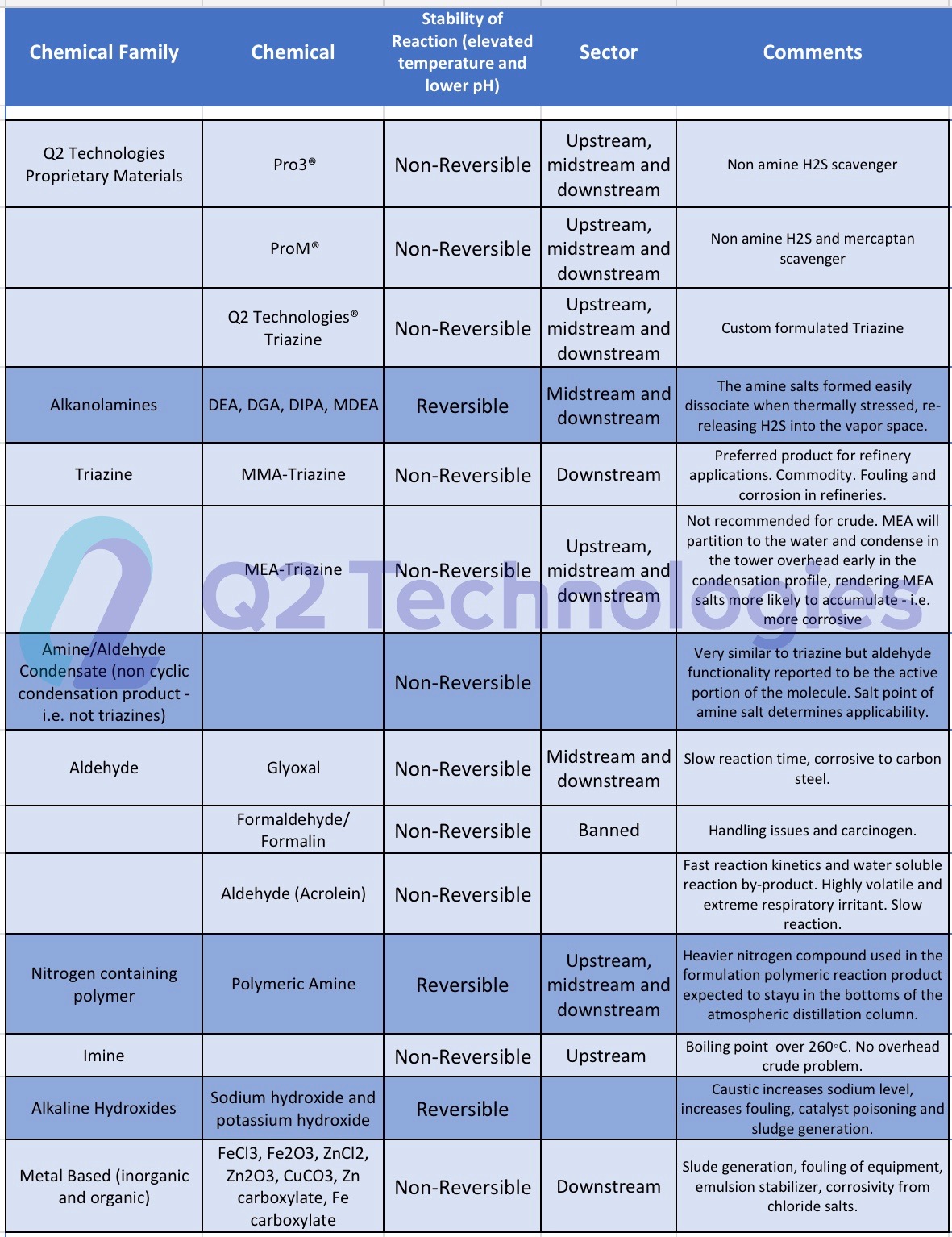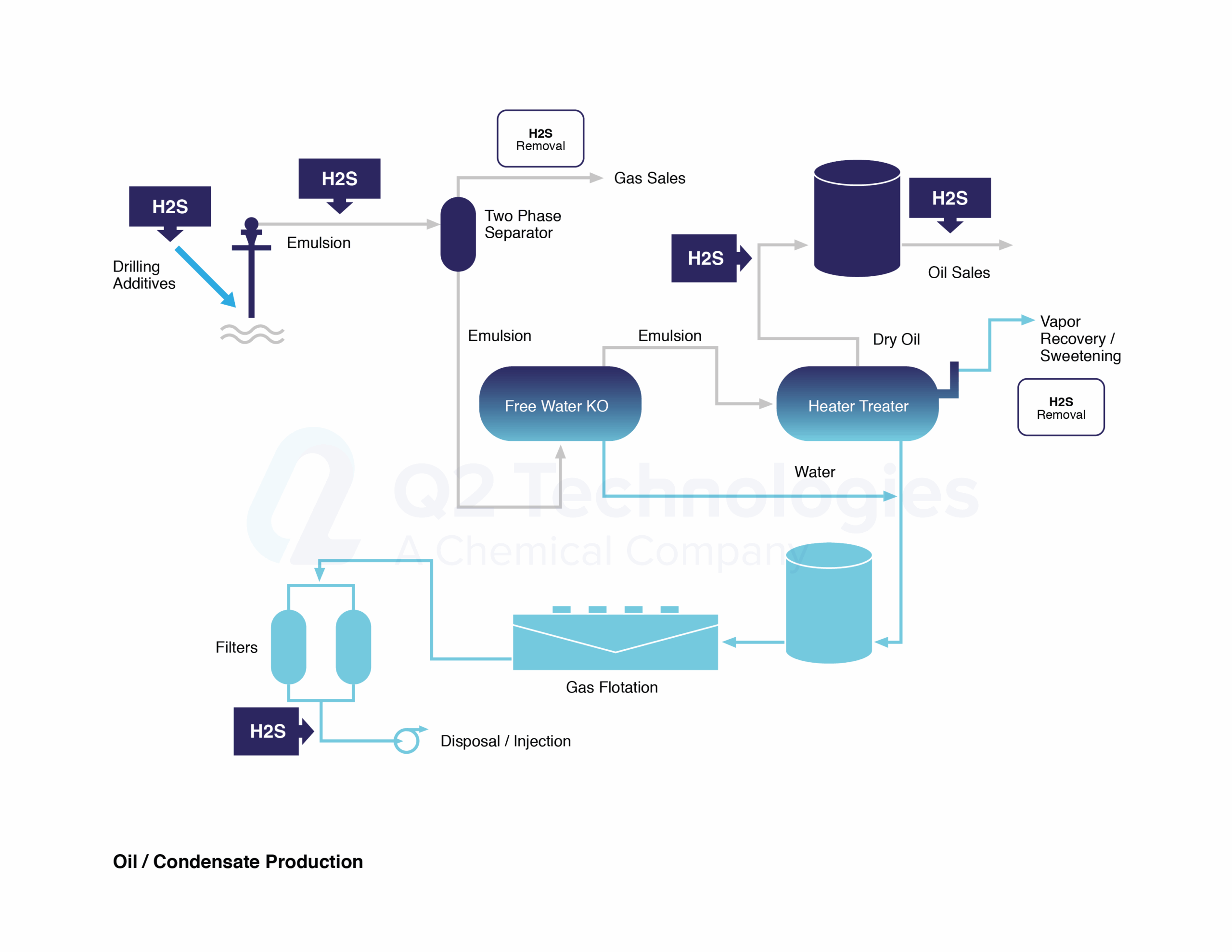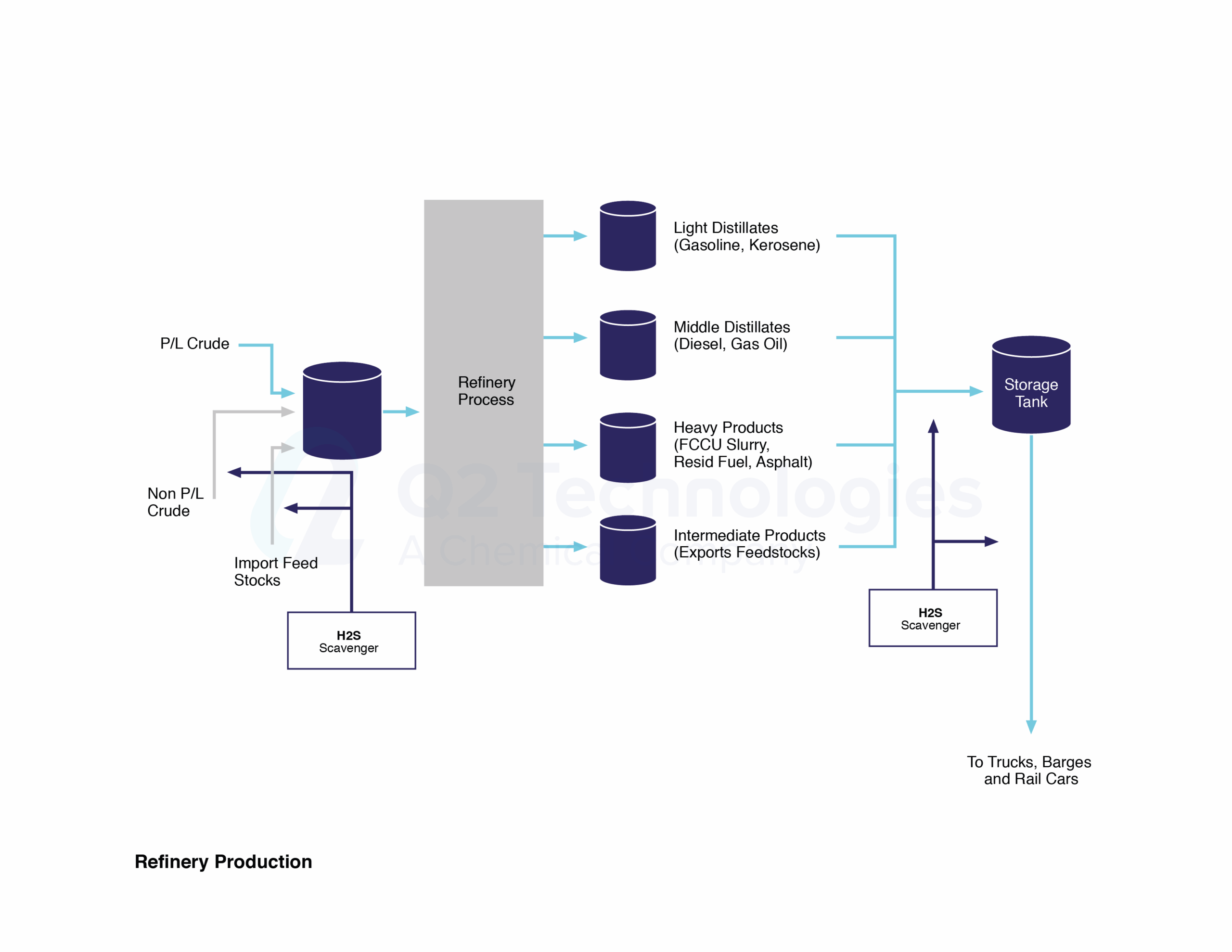Hydrogen sulfide (H2S) is typically a minor gaseous constituent found in crude, gas, and water, produced when sulfate-reducing bacteria (SRBs) break down organic sulfur compounds. Some fracking fluids can also react with rock formations under high pressure to generate H2S.
After performing H2S testing, it is crucial to mitigate its impact and bring crude oil to the desired specifications. Various mitigation techniques, such as mechanical/operational, biological, and chemical methods, are chosen based on factors like crude characteristics, H2S concentration, and economic considerations. To learn more about how we can help mitigate H2S in oil and gas reservoirs, check out this article. Hydrogen sulfide is not found in isolation but together with methane, hydrogen and higher hydrocarbons, and traces of nitrogen-, oxygen-, calcium-, and metal- containing species which complicate the selection of the most suitable H2S mitigation technique.
Importance of H2S Testing and Treatment
Mechanical/operational H2S mitigation techniques
When natural gas is produced as a byproduct of oil extraction, operators will often vent or flare the gas. Flaring is the practice of burning gas that is deemed uneconomical to collect. Flaring is also used to burn gases that would otherwise present a safety problem. It is common to flare natural gas that contains hydrogen sulfide, in order to convert the highly toxic hydrogen sulfide gas into less toxic compounds. Venting is the direct release of methane gas to the atmosphere. During oil development, gas may vent to the atmosphere. The solids and fluids from the well go to the pits, while the gases are allowed to escape to the atmosphere, or they are flared.
Physically, stripping is less common alternative to remove H2S. The oil industry may use a nitrogen stripping system to remove the H2S. Nitrogen is an inert gas that prevents the flammable gases from igniting and thus eliminates the risk of explosion. Once the H2S has been stripped from the crude oil, it is usually flared. This process tends to create 5-10% barrel losses as other light compounds are stripped from the crude. This process is energy intensive and time consuming as it occurs in batches.
Membrane technology could offer a solution for the nitrogen transportation hassle that some sour crude treatment facilities require. In this case, compressed air is pushed through a set of polymer fibers or the membrane. As the compressed air moves through the membrane, the nitrogen molecules are separated from the other molecules.
Biological H2S mitigation techniques
These are used for water in wastewater treatment plants but not for crude oil at the moment.
Chemical H2S mitigation techniques
Additives to treat H2S in crude oil are very diverse and work in different forms. The reduction in concentration of hydrogen sulfide might follow the absorption route, such as alkanolamine, ammonia solution and alkaline salt solutions; and oxidation of H2S using iron oxide, activated carbon or a Claus process.
H2S mitigation technologies are not mutually exclusive and a combination of techniques might be used. On Table 1, we show the different chemical additives that are commonly used for H2S removal in crude oil.

Table 1.- Chemical Additives for H2S Removal in Crude Oil
H2S Scavenger Use in Oil & Gas Operations
Upstream Applications
H2S is present along the hydrocarbon production line. Figure 1 shows where in the upstream operations H2S scavengers are used as well as the places where H2S is found.
Figure 1.- Points where H2S scavengers are used in oil/condensate production operations.
Midstream Applications
Midstream operations link the upstream and downstream entities, and mostly include resource transportation and storage services for resources, such as pipelines and gathering systems. H2S scavengers are used for cargo treatment, before introducing the oil in pipelines and when it is being removed from storage units. It is key to meet H2S specs in order to transport crude oil and gas via pipeline.
Downstream Applications
Downstream operations are oil and gas processes that occur after the production phase such as refineries, petrochemical plants and retail outlets. Figure 2 shows the points in the downstream operations where H2S scavengers are used.

Figure 2.- Points where H2S scavengers are used in refinery operations.
Whether your needs to mitigate H2S are upstream, midstream, or downstream, we at Q2 Technologies can help you treat your crude oil and get more bang for your money. We are reliable suppliers of triazine-based scavengers that will bring your oil to specs. Similarly, we offer our high-performance non-triazine Pro3® scavenger and mercaptan scavenger ProM® to provide you with the best solutions for your H2S challenges. For more information, check out our common questions about H2S removal. Contact us today to discuss how we can serve you.







